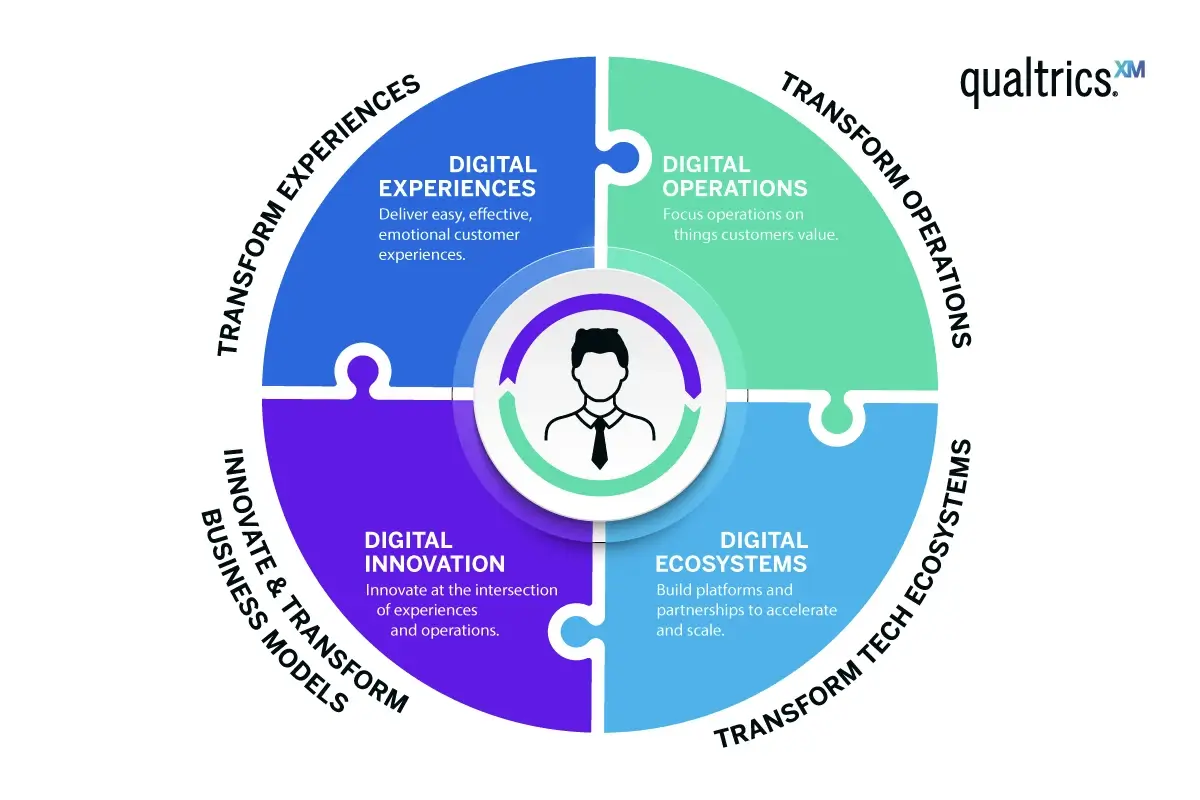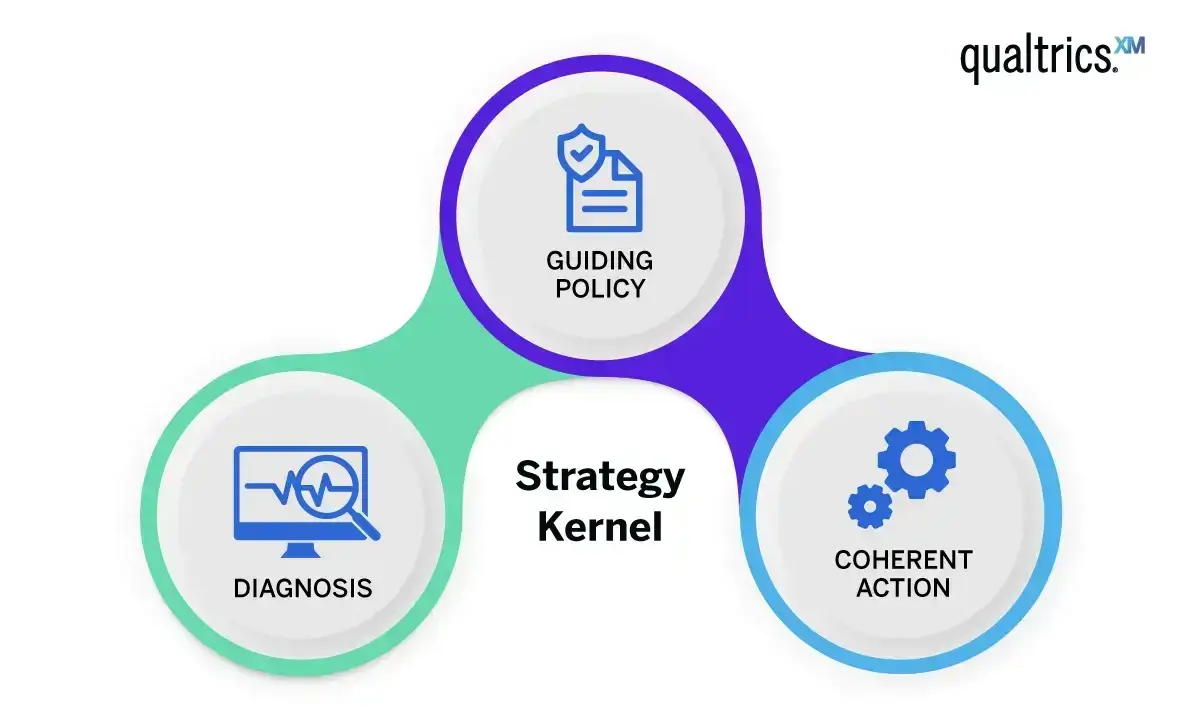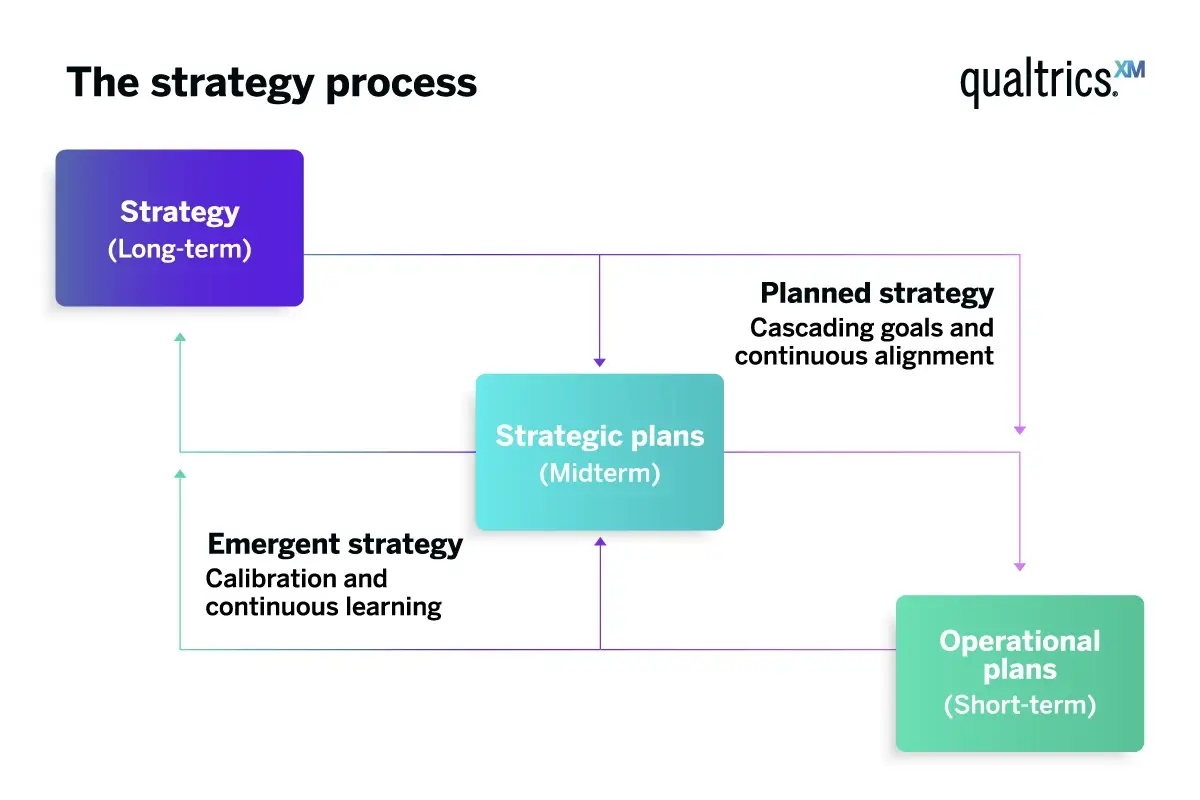What is a digital transformation strategy?
Digital transformation is often seen as a brand imperative in an increasingly competitive market, but what is it and how does a digital transformation strategy work?
The term “digital transformation strategy” means the planned changes to business processes using digital technology to lessen the reliance on manual labor, improve efficiencies and stay ahead of the competition.
Digital transformation strategies usually involve changes to:
- IT infrastructure, with modernization of legacy systems and the addition of cloud computing
- Internal processes, with greater opportunities to reduce overheads, labor dependencies and inefficiencies
- Customer experiences, such as customer journeys and customer services
- Culture changes, people management and team integrations
Nick Fenwick, principal analyst at Forrester, has broken down the aims of digital transformation into the following four areas:
- Business models: Rather than continuing in business models that aren’t able to keep up with the market, technological innovation or customer expectations, business models are transformed to deliver brand experiences in new ways.
- Experiences: To create emotionally engaging and easy customer experiences that improve business outcomes.
- Operations: The improvement of operations both internal and customer-facing to ensure that employee experiences and business efficiencies are improved. This could also cover internal experiences and workplace culture.
- Tech ecosystems: To create a technological ecosystem that can scale, adapt and grow to new business needs and customer expectations.

A common misconception is that digital transformation is simply business optimization, such as upgrading outdated technology. However, transformation involves an entire shift in mindset and a novel, digital-first approach to propelling a business forward.
But why do you need to put digital transformation at the top of your priority list?
Free eBook: The digital experience playbook
Why do you need a digital transformation strategy?
There are significant benefits to creating a digital transformation strategy. Here are just a few:
Your competition is already doing it
Your competition is likely already undergoing a digital transformation. Global expenditure on digital transformation is due to reach $2.8 trillion by 2025, meaning if you’re not investing in the digital future of your business, you’re going to be left behind.
It helps you to manage risk
From artificial intelligence to augmented reality, cloud computing to quantum computing, the market is moving ahead with digital solutions. To keep up with the tide, your brand will need to think not just about fixing current issues, but weathering future ones as well. Reducing your risk means future-proofing your operations and adapting to new customer expectations.
For example, automating your contact center’s quality management program means that you can analyze not just a small sample of calls, but every single point of contact. All conversations between your contact center agents and your customers can be scrutinized for compliance, reducing risk and providing you with clear routes for improvement.
You can reduce cost to serve and overhead costs
A top motivator for implementing a digital transformation is the potential cost savings. Streamlining your operations and using new technology to replace manual tasks can help you to optimize your workflows, reduce errors and refocus your employees’ efforts onto more value-add activities. You can also save vital financial resources by moving to cloud-based solutions, such as directing low-effort service requests to digital customer service channels rather than to contact centers or physical locations.
It helps you to identify and focus on areas of improvement
A good digital transformation strategy means evaluating your current business models and detecting the highest-value areas of improvement. The technology you implement doesn’t need to be new. Auditing your existing technology and ensuring all capabilities are being utilized to optimize your business can also be a valid part of your digital transformation strategy. You can then eliminate any redundancies in your company’s tech stack, and consolidate your technology on a platform that is future proof for growth.
It allows you to anticipate customer experience needs
Customers increasingly expect businesses to take proactive action. They want brands to meet them where they are and make their experiences as low effort as possible. In our own research, we found that customers who rate an experience 5/5 stars are more than twice as likely to buy again and 80% of satisfied consumers spend more with the brand. With a digital-first approach, you’re able to create an omnichannel customer experience strategy with data analytics and predictive intelligence built in.
You can improve business outcomes
Businesses operate with a revenue-minded approach. Digital transformation takes into consideration the ways in which a brand can optimize its output and build a solid foundation for revenue to increase in future. For example, when done right, a digital strategy can retain employees by ensuring consistent and effective onboarding, or it can automate service recovery based on customer behaviors. Changes such as these can increase productivity and revenue.
Digital transformation and the customer experience
Developing a digital transformation strategy is more than simply a method to reduce overheads or the cost of labor. Transforming how your brand interacts with and handles your customers via digital means can directly improve your customer loyalty rates and subsequently your bottom line.
Our recommendations are to:
Understand that easier digital processes doesn’t automatically translate into better customer experiences
Even if your digital transformation enables your customers to better access your products and services, your customer experience can be impacted negatively by an increasingly digital and less human approach.
As our XM Institute has discovered, interacting with other people is more emotionally satisfying than interacting with a digital interface. When replacing less efficient, human-led processes with digital methods, it can be easy to lose customer interest and loyalty because of a perception that a business is less caring or neglects customer experience.
Create emotionally engaging experiences
Digital experiences, therefore, need to be emotionally engaging as well as enabling effortless interactions. Rather than focusing solely on efficiency, brands should aim to meet customer needs and preferences with the digital technologies they implement. For example, a business might identify that a customer is ending a service due to a death, and send a sympathy message automatically.
Asking for and analyzing customer feedback continually can be very useful for understanding which digital transformation actions have been met favorably and what else could be done to make customer experiences seamless and appealing.
Continually evaluate progress
A digital transformation strategy can greatly improve a customer’s relationship with a brand, particularly when new digital technology is implemented to better track and take action on customer experience. Using artificial intelligence and data analytics, brands can get a holistic, real-time view of customer experiences and deliver the next best action based on who the customer is and their preferences.. With customer feedback integrated as well, you’re able to take the best actions for customer experiences every time.
Who should be involved in digital transformation?
For a digital transformation to be a success, it requires more than just one team or one leader to drive the process through. A truly digital-first business understands that a digital transformation strategy requires input from anyone affected by the proposed changes, as well as participation in the process.
Effective transformation also requires effective organizational change management. The technology used is only part of the success of a strategy – digital transformation requires a change in how people work and their processes.
Here are our tips on getting the most out of digital transformation strategy from your business and its employees:
Encourage management take the lead
It can require strategic initiatives from management to successfully enact a digital transformation, particularly when the strategy involves changes across multiple areas of the business. Without the right direction from leadership, digital transformation can be difficult to push through and take longer than necessary.
Sell the vision to the business
It’s important that your employees all share a similar vision for digital transformation. Ensure that they understand the improvements that the strategy will make to their working lives, and what specific benefits they can enjoy on the other side.
Appoint a team to oversee the strategy being enacted
A digital transformation strategy can become ineffective without the right people propelling the process forward. Appointing a skilled, centralized team to help keep track of the actions being taken is important for the strategy to be maximized.
Communicate effectively
Creating a successful plan can all depend on the communication before, during and after implementation. Developing a solid communication strategy will help your teams to not only understand the vision, but carry out actions and overcome roadblocks without micromanagement from leadership. It can also help your strategy team to pinpoint friction and provide solutions.
Decide on measures of success
Once your strategy is in place, it will be critical to develop metrics to measure progress and success. Without these, organizations will struggle to see if their digital transformation strategy initiatives and investment has been worthwhile.
How to create a digital transformation strategy
According to leading strategic expert Richard Rumelt, often brands are missing the mark on what a strategy is before they even tackle its implementation. As he put it to McKinsey: “Strategy is problem-solving. It is how you overcome the obstacles that stand between where you are and what you want to achieve.” Rumelt also notes that many strategies put forward by businesses are “bad” in that they don’t actually cover strategy, but instead outline performance goals. “That’s a set of ambitions,” he explained. “[The] gap between action and ambition is where most bad strategies come from.”
A successful strategy, as Rumelt outlines it, requires three main aspects:

- A Diagnosis
What’s actually happening in your business? What needs improvement, and what is already working efficiently?
Without a diagnosis, any strategy is simply guesswork and may end up causing more problems than it resolves. Pinpointing where there’s friction, inefficiencies and difficulties to resolve is important for your digital transformation strategy to be worth the time and effort.
- A Guiding Policy
Once you’ve figured out what needs to be fixed, you then need to establish your guiding policy: a general strategic direction without any specific actions being outlined. This is the guide your team will follow to achieve your goal, not the vision of what your brand will look like post-deployment of your strategy. It should build on the advantages your business already enjoys.
For example, this guiding policy might be:
“Customer experience provides the best ROI for our business and is a recognizable aspect of our brand. Any action taken in our digital transformation strategy should improve customer experiences.”
With this guiding policy, your team will know that each step taken should take customer experience into consideration – and your results will be better for it.
- Coherent Action
The final step is to develop a concrete plan of action, with specific tasks and responsibilities outlined. This should be understood by all and driven forward by your senior management to ensure it’s not just an eventual goal, but an ongoing process. Outlining your key performance indicators for success is key.
Here’s our guide to creating a successful digital transformation strategy:
A guide to creating a digital transformation strategy
- Pinpoint the business needs and aims for a digital transformation strategy
It’s vital to understand that a digital transformation strategy isn’t a short term fix of immediate problems, but the development of a longer-term approach that iterates your business processes for the better. Moving past the initial question of “What manual process can we automate?” and into the realm of improving customer and employee experience will be vital for growth. Particularly important is the development of your business diagnosis and your guiding policy.
To help, you could ask your team:
- What could we improve in terms of efficiencies across the business?
- What experience upgrades can we offer our staff/customers to increase productivity and retention?
- Which areas would have the best ROI?
- What business silos can we break down using digital technology?
- What data are we gathering and not currently leveraging?
- Identify obstacles and opportunities
If there are opportunities to get new digital approaches to integrate with your existing setup, that can help to ease the transition for your staff and create a technological ecosystem that can improve over time.
You will need to identify:
- What practical hurdles will need to be overcome: cost, resource, reluctance to engage
- How to unite your C-Suite, IT, operations, marketing, sales and other function behind this cause
- What technology can be kept and what new digital software can replace or augment your existing infrastructure
- Understand your competition and the market
What are your competition doing or offering that your brand isn’t able to because of technological limitations? Scoping out the new frontiers for your market and what you need to implement to stay competitive can help you to cement your digital transformation aims.
You should research:
- What new technologies are being adopted across your market, and how can you get ahead of the curve
- Where technology can help you to disrupt your marketplace
- Choose your technological support
Digital transformation is more than just purchasing and using new digital technology. The right software can help to bolster the integration of new tools into legacy systems and ensure that maximum efficiency is reached.
You should:
- Plan for your technological ecosystem in accordance with the current needs of the business and your eventual goals
- Aim to use holistic, unifying digital technology that can break down silos and unite your business
- Lay out KPIs and goals in a plan of action
In line with the “good strategy” approach outlined above, your key performance indicators and goals should all follow the guiding policy, and work through the short to long term implementation of your strategy.

You should:
- Break down goals into the immediate, mid-term and long-term actions for the business
- Ensure teams are aware of both the guiding policy and the specific actions they are responsible for
- Consider appointing a specific internal team to oversee all actions across the business
- Engage your employees
As discussed previously, your employees will be the biggest drivers of digital change – and without the right motivation, progress can fall by the wayside.
Consider:
- Hosting workshops, feedback gathering sessions and more to understand employee concerns
- Ensuring employee experience is also at the forefront of any digital changes, as they will likely be the first to feel its effects
- Enact your strategy
The second to last step is to enact your strategy. The final step, of course, is to measure its success.
How to measure the success of your digital transformation strategy
The last step in the digital transformation process is to evaluate progress. Your digital transformation strategy isn’t complete once it’s implemented – it’s a constantly evolving process that keeps your brand up to date with the latest market innovations.
You can measure the success of your digital transformation strategy using the following methods:
Data analytics
Data analytics will be a key tool to evaluating the success of your strategy. With an all-encompassing data analytics approach – financial, operational, customer, employee data and more included – you can better evaluate your success and make predictive insights about the results of further action.
Set key performance indicators and use a benchmark – that might be internal or industry wide – and judge your performance against those. For example, if you’re implementing a chatbot to help manage surges in call volumes, what percentage of queries is that bot taking compared to prior? And how is that affecting wait times in the call center?
Feedback
Customer feedback and employee feedback are fantastic ways to understand how your digital transformation journeys are progressing. Have your implemented actions had the desired effect? What success can be replicated and what needs to change?
Digital transformation strategy examples
There are many businesses, both large and small, which have successfully implemented digital transformation initiatives.
Here are some examples of digital transformation strategy paying off for brands:
IKEA

A three year period of digital transformation strategy being enacted helped to triple furniture company IKEA’s ecommerce levels and change their stores into fulfilment centers with ease. Led by Barbara Martin Coppola of Google fame, the company integrated their offline and online customer experiences and balanced a growing ecommerce income stream with their traditional storefronts. The brand was able to overhaul its inventory management, logistics, and supply chain through data analysis and implementing data-led action.
Key learning: Digital transformation can often mean branching out into the digital space – but as IKEA demonstrated, it can also streamline efficiencies within physical locations.
Electrolux

Providing leading restaurateurs with cooking equipment and laundry facilities, Electrolux Professional manufactures high quality products specific to customer needs – but until it restructured its production model with a digital transformation strategy, it experienced unnecessary inefficiencies. By implementing a digital system for ordering product variants and standardizing parts to become more modular, the business was able to reduce parts by 40%, saving vital financial resources.
Key learning: Working smarter, not harder, is an ideal outcome for a digital transformation strategy. A digital-first approach can help to identify pain points and inefficiencies and generate better business outcomes as a result.
The Qualtrics Digital Experience Playbook
Empower your team to enact digital transformation strategies with Qualtrics™. Read our Digital Experience Playbook to understand how to develop and drive through a digital transformation strategy that not only resonates, but propels your business to the next level.
Free eBook: The digital experience playbook